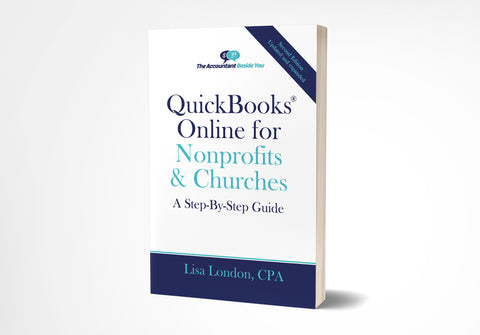Recording Stock and Endowment/Memorial Donations With Unrealized Gains and Losses
Does your nonprofit encourage donations of stock? If not, you should.
Transferring stock for a charitable contribution may give the donor a significant tax advantage. With the stock market at all-time highs, many donors may have stock that has grown in value over the last few years. By donating the actual stock instead of selling it, the donor will not have to pay capital gains on the appreciation. This is a win for both the donor and the organization.
Stock transferred as a donation to an eligible organization may be deducted by the donor at the market value as of the date of transfer, IF it has been held for over one year. (If it was purchased less than one year ago, the contribution is limited to the purchase price of the stock.) In order to understand how this helps your donors, let's walk through an example.
Assume I purchased 100 shares of a corporation five years ago for $15 per share. In 2018, the value is up to $30 per share. Assume I would like to give my church a $3000 donation. If I sell the stock, I will receive $3000 ($30 x 100 shares), but I owe the government capital gains tax on the $1500 increase in the value of the stock ($15 per share x 100 shares sold). So now, instead of having $3000 available to donate, if I'm in a 20% tax bracket, I only have $2250 available.
If I transfer the 100 shares directly to the church, I can still take the full $3000 charitable gifts deduction from my taxes, but I don't have to pay any capital gains tax, nor does the organization. For additional information, go to the IRS website http://www.irs.gov/publications/p526/ar02.html#en_US_2013_publink1000229755 or talk to a tax specialist.
Many times I’ve heard organizations say they don’t accept stock transfers because they don’t have an investment account. As a strong believer in making it easy for your donors to give you money for your mission, I encourage your organization to set one up immediately. Work with a local broker and you can quickly develop an easy set of instructions on how to transfer stock to your account.
Now here is the important part. Let your donors know about the option! Remind them to speak to their tax professional to get the best benefit. There should be a designated person in your organization as the point person for the donors if they have questions. And do NOT list your account number in an email or on your website. Let’s not make life easy for hackers.
Once you receive the donation, don't forget to acknowledge it. Church Accounting: The How-To Guide for Small & Growing Churches explains the various requirements for donations and gives examples for you to use. Your donor will appreciate the increased ability to maximize their donation to better serve your organization's mission.
Now to the nitty-gritty. To record the receipt of stock in your accounting system, you will want to set up an invoice under the donor’s name for the full market value of the stock. If the stock was used to pay a pledge that has already been entered, you can skip this step.
If you are using QuickBooks, go to Receive Payments. Enter the amount as the full market value. If there were brokerage expenses, we will record those later as the donor records need to reflect the full value before any transaction expenses. You may add a PMT METHOD called Stock.
The value of the stock on the brokerage report may be slightly less than the pledge. This often happens when there is a change in value from the time the donor authorized the transfer until it was recorded in your account. If so, QuickBooks will ask if you want to leave it as an underpayment or write off the extra amount. If it is a small amount, choose the write off option. Save this payment, and your donor records will be up to date.
Next, you will need to go to Make Deposits. Change the Deposit To option to the investment account the stock was transferred into. After selecting the amount from the Payments screen, you can adjust the deposit for any transaction fees. Enter the fee amount as a negative number on the next line. You will also need to assign a general ledger account number to the adjustment under the FROM ACCOUNT. I usually prefer to use the same donation account where the invoice/pledge was recorded so the net donation will be correct. Save the deposit.
If your organization sells the stock, make a journal entry to record the transfer
Debit Credit
1100-Checking Account $4800
6381-Bank Service Charges* 200
1120-Investment Account $5000
*If the organization does a number of stock sales, set up an Other Expense account for Investment Transaction Fees.
Now the Statement of Financial Position (Balance Sheet) and Statement of Activities (Income Statement) reflects the donation properly.
If the stock was donated to fund an endowment, you may wish to keep this money in a separate account from other cash or investments. Between classes and accounts, assets and equity, it can get very confusing trying to figure out how to track all the related pieces of an endowment or memorial account. Let’s separate the pieces to see how to record these in QuickBooks.
In this example, a generous donor has donated $10,000 of stock to seed an endowment fund. If you are going to keep this money in a separate bank account from your other investments, you will record the initial receipt as follows:
Account Type Debit Credit Class
1xxx Endowment Investment Asset 10,000
4xxx Endowment Donations Income 10,000 Endowment (Restricted)
Assuming $50 of quarterly earnings are to be transferred to the general fund, the following entry would be made.
1xxx Checking Asset 50
4xxx Investment Income Income 50 General Fund (Unrestricted)
The system (QuickBooks) assumes only one equity account, so at the end of the year (or monthly or quarterly if desired), the net change in assets (Donations less Expenses) needs to be recorded in the Restricted Net Asset equity accounts. To do this, run a P&L by class. Using our examples above, we need to set up an equity account for the Endowment to record the $10,000 net income.
3xxx Unrestricted General Fund Equity 10,000 Do Not Use Class
3xxx Restricted Endowment Equity 10,000 Do Not Use Class
Now you will have a balance sheet with an Endowment Investment Asset of $10,000 and a Restricted Endowment Equity account of $10,000.
Please note: you can track restricted accounts without separate bank accounts using the Equity account. It would be treated the same way, only the asset would be your combined investment account.
Recording changes in valuations of investments.
Whether the donations of stock were given for endowments or general support, we need to record the investment earnings and change in values. If your nonprofit or church has investment accounts, you will notice on the brokerage statements the earnings may be divided into Realized and Unrealized Income. Realized income is money earned and received into your account. Typical examples are dividend income, interest income, gain (or loss) on the sale of stock. Unrealized income/loss reflects the impact of current market conditions on your holdings.
For example, assume the organization has 100 shares of stock in American Airlines it purchased at $40, for a book value of $4000. If the market price of American Airlines stock is $42 at the end of the quarter, the organization has an unrealized gain of $200 ($2 per share x 100 shares). If the stock price was $38, it would be an unrealized loss of $200. If American Airlines paid a 3% dividend, the $120 ($4000*.3%) would be a realized gain.
To keep your accounting records accurate, you will want the Statement of Financial Position and your Statement of Activities to reflect both the realized and the unrealized gains and losses. Many smaller organizations record them in a single investment income account, but I recommend showing the realized separate from the unrealized so the governing council can see what has actually been earned versus market fluctuations.
Using the example above, let’s walk through a sample journal entry.
Debit Credit
1120-Investment Account $320.00
4520-Realized Gain/Loss Investment $120.00
4530-Unrealized Gain/Loss Investment $200.00
The class can be your general/administrative class, or, if the investment account is to support a specific program, the realized gain/loss should be coded to the appropriate program or fund class. I prefer to keep the unrealized gains and losses in the general/administrative class, so the program's financials aren’t distorted by changing market conditions.
After the transactions are recorded, the ending balance in the 1120-Investment Account should equal the ending balance on the brokerage statement.




